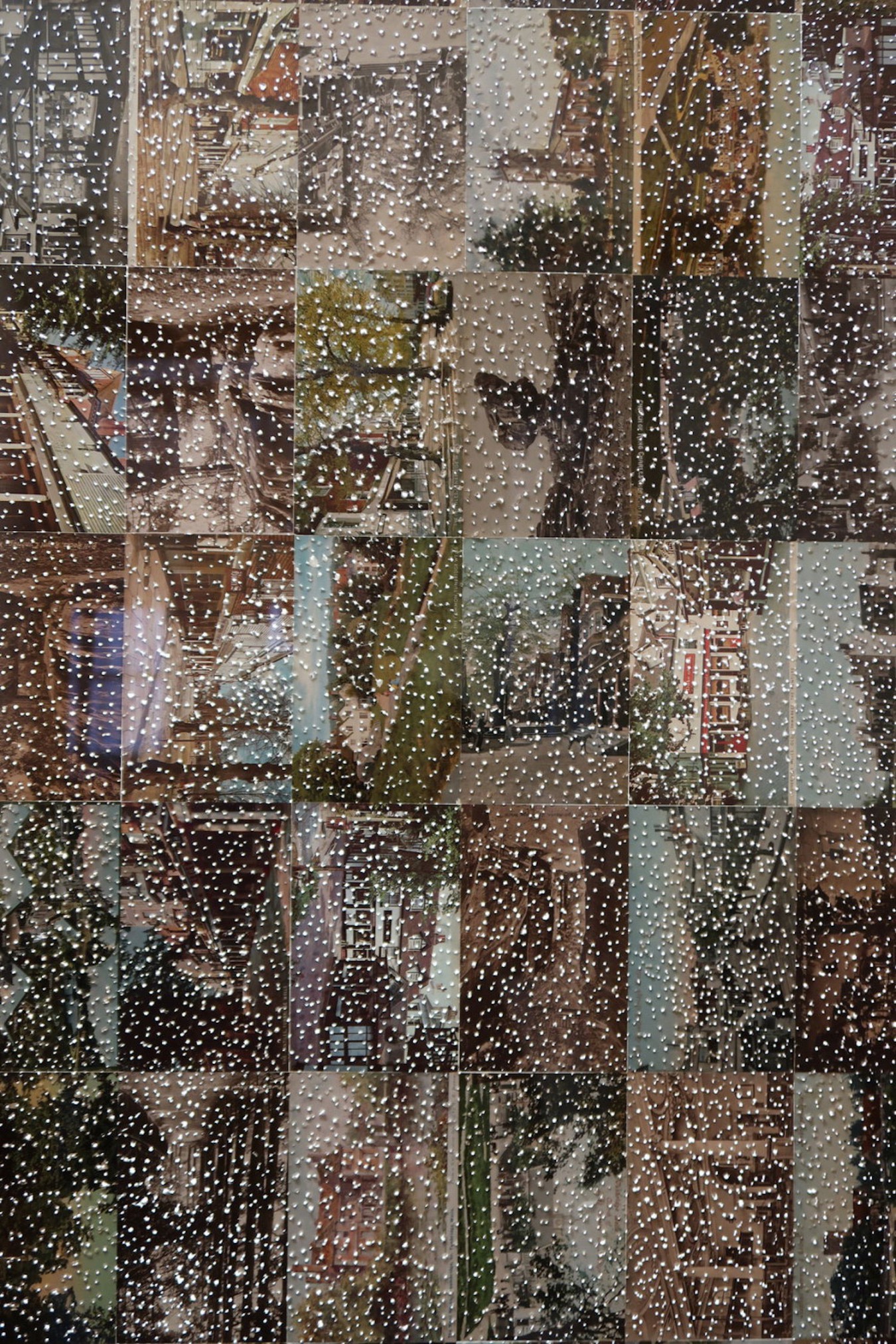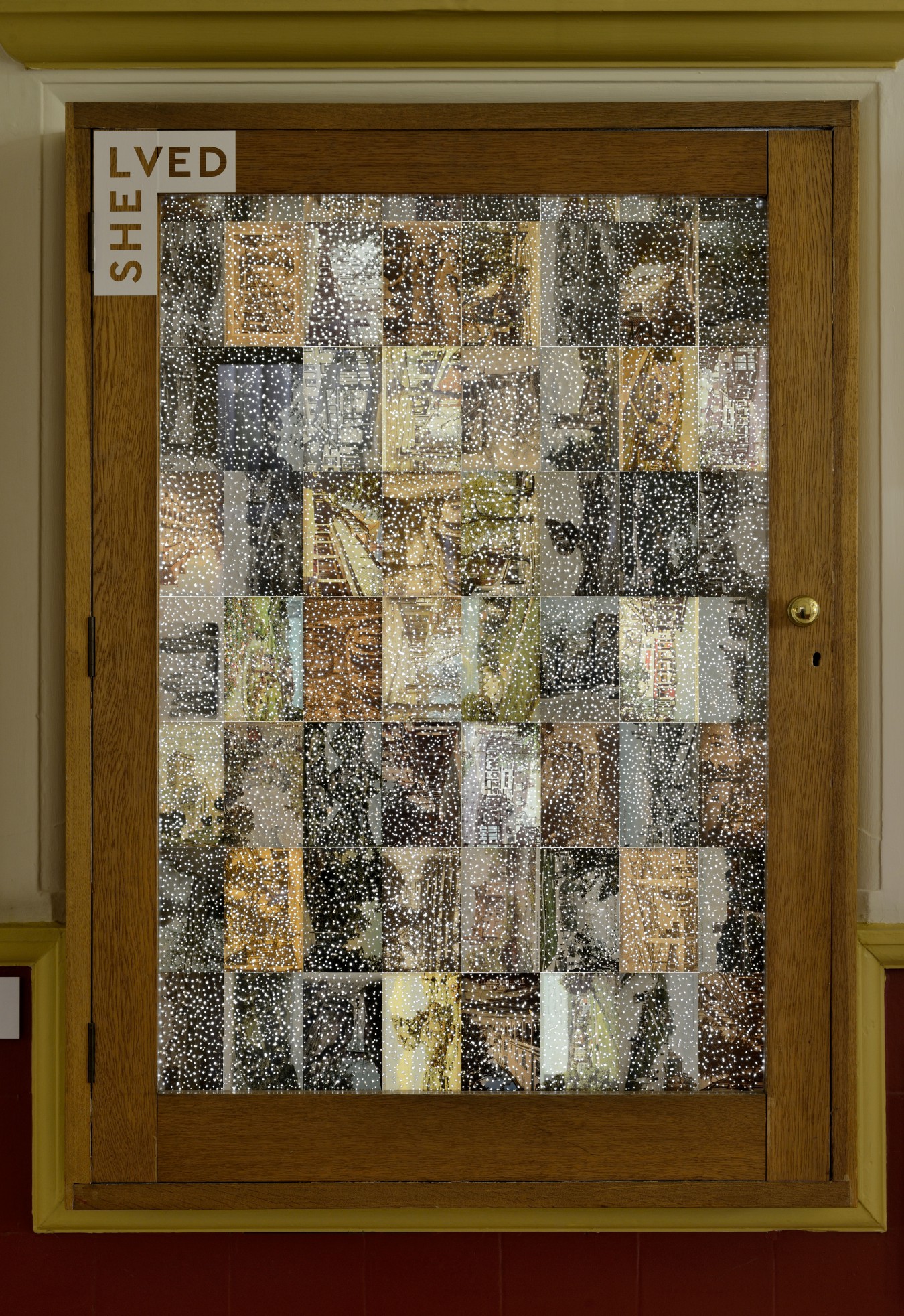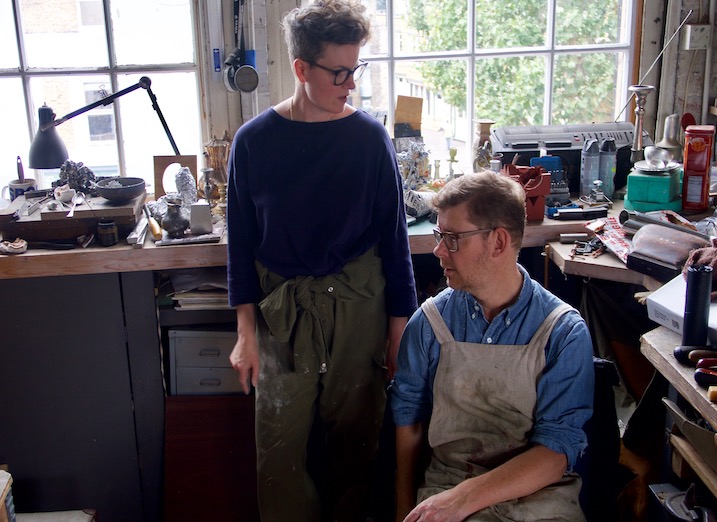

Tracey and I have a long history of working together, dating back to 2009 when we joined forces and initiated a collaborative group called 60|40. When the two of us come together on a project, work isn’t divided into separate tasks or disciplines, however, it is both intense and challenging. Still, we trust each other and value the opportunity to learn as we develop new work.
“We make together what we are not able to do individually, and the collaborative process allows us to discover new materials, form, scale and subject matter.”
More recently, our focus has been on undertaking residencies and actively seeking opportunities that provide us with a period of concentrated time together. This approach enables us to explore new thinking and uncharted territories and to embrace risk. Two examples of this approach in action are ROOM, funded by the Arts Council England (ACE), and SHELVED, part of a significant cultural regeneration project supported by the National Lottery Heritage Fund (NLHF).
About Tracey Rowledge
Tracey Rowledge lives and works in the UK. She studied Fine Art at Goldsmiths’ College, London, and Fine Bookbinding and Conservation at Guildford College of Further and Higher Education, Surrey, UK.
“There is an essential paradox that distinguishes Rowledge’s work, as her practice straddles fine art and the applied art of bookbinding. Drawing and materiality also play important roles in her work, and it is the coexistence of these two ways of thinking that informs the infinitely subtle judgements she is known for.”
Emma Hill, Eagle Gallery
Tracey and I have a history with Leksands Folkhögskola; we have both taught there, separately and together, over the past years. I also have a more extended history with Sweden, as I was also teaching at Konstfack School of Art, Crafts & Design for over 12 years.
During conversations, we began to explore the possibility of spending time away from the urban landscape of London, where we are very comfortable. To shift to a rural environment that was deeply challenging for both of us, and to see how to navigate through this time away from the knowns, and to see what we could find through many studio visits to other artists and their workshop environments.

We had three extraordinary weeks at Leksands Folkhögskola in 2021, meeting many wonderful people from Dalarna who generously shared their time, thinking, and trade secrets with us. The residency would not be possible without the support from: IASPIS, Stiftelsen Handwork & Ubildning, Region Dalarna, Bengt Julins, Stiftelse, Wallen Hallen, and Leksands Folkhögskola.
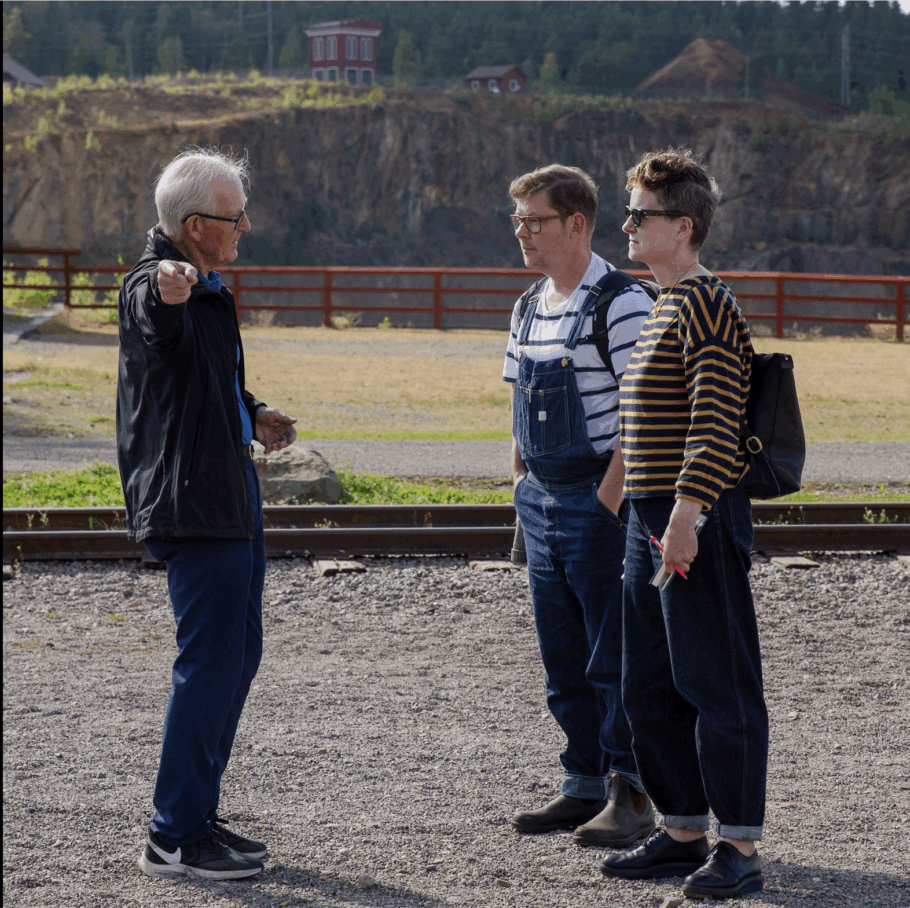
We had 3 extraordinary weeks at Leksands Folkhögskola in 2021, meeting many wonderful people from Dalarna who generously shared their time, thinking, and trade secrets with us. The residency would not be possible without the support from: IASPIS, Stiftelsen Handwork & Ubildning, Region Dalarna, Bengt Julins, Stiftelse, Wallen Hallen, and Leksands Folkhögskola.
During the residency, we decided that it was only right to return 1 year later with Field Note, the exhibition 2022. It was a response to the time, conversations, and encounters we had met along the way. Our wish was to distill this time down to the essence of our experience in Dalarna. 3 pieces emerged, each tackling different aspects that left a strong imprint on us.
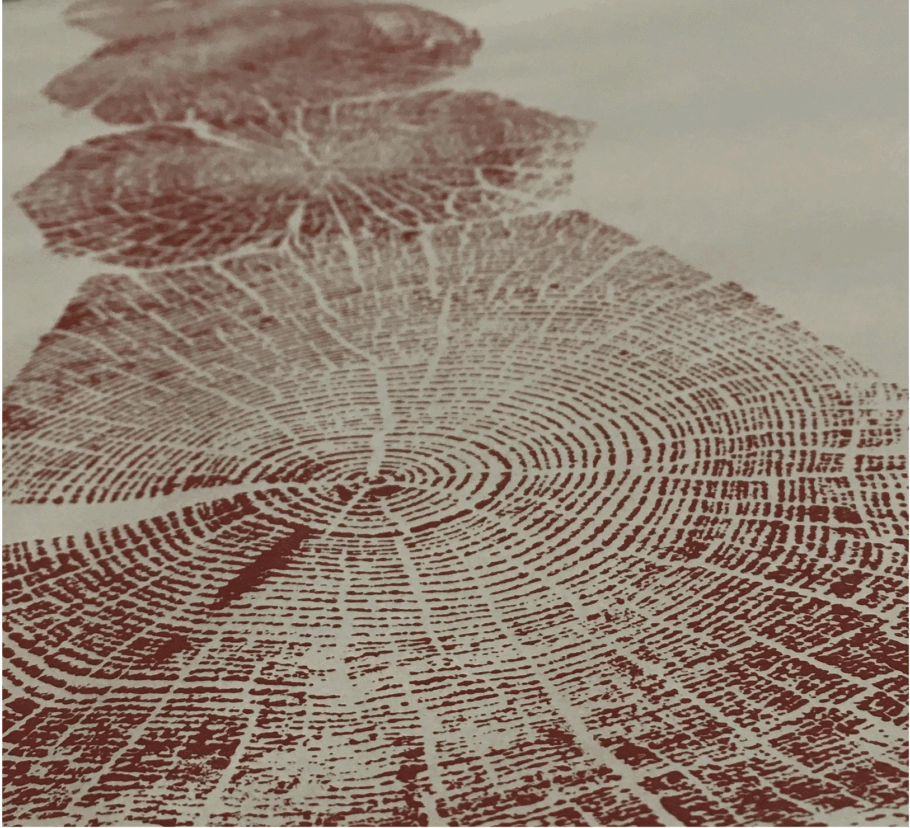
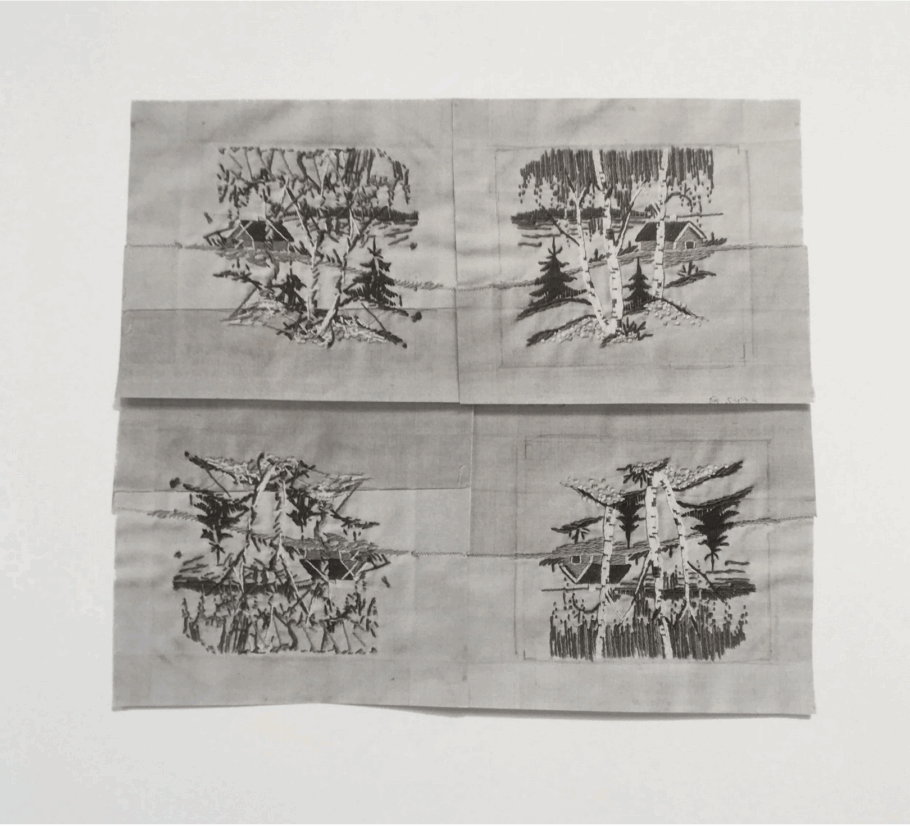
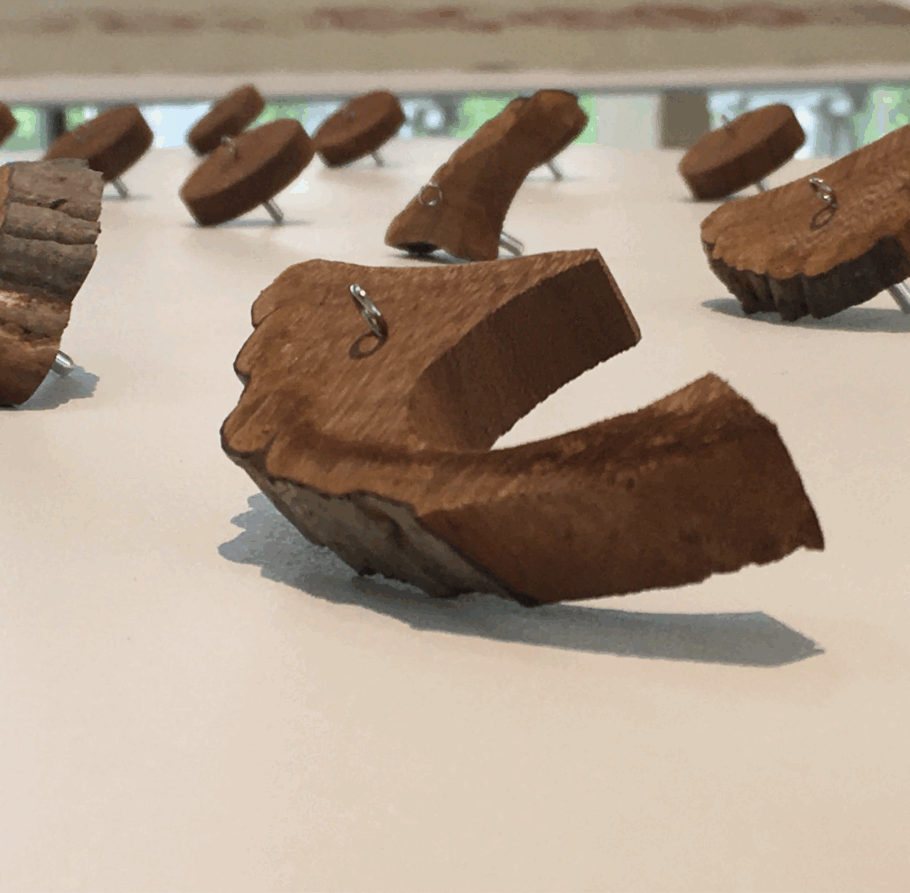
‘It is perhaps when we embrace the profound awkwardness within the other and within ourselves, when we give ourselves permission to be uncomfortable, that new pathways become visible, which have the potential to affect the ways we move through, and care for, the world.’ Extract from essay in exhibition publication, by Beatrice Brovia.
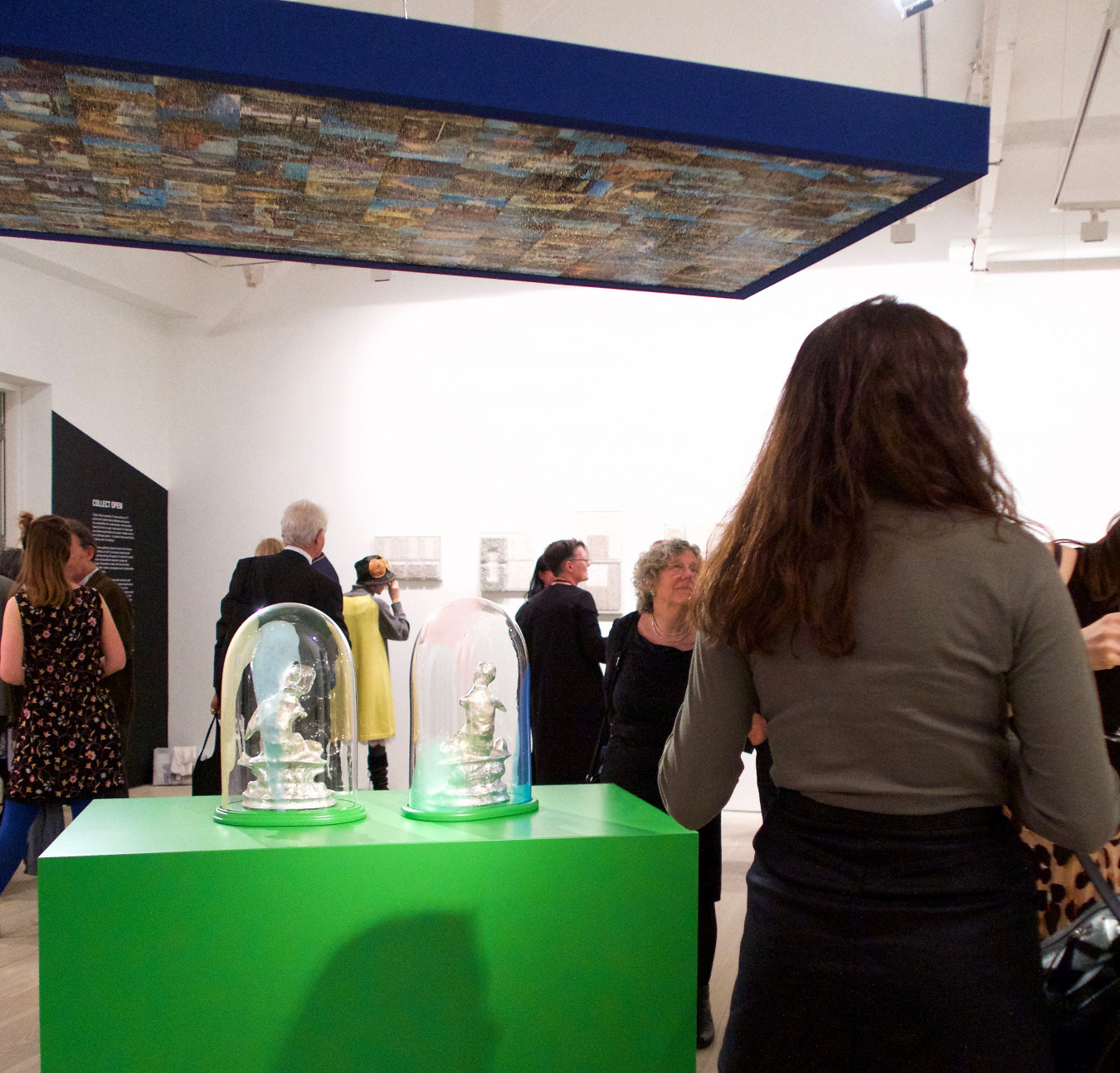
ROOM
Installation
Year 2019
The installation was comprised of a large, suspended and backlit ceiling panel. This was constructed using historical postcards depicting European locations; each postcard was perforated with tiny holes to illuminate the space below.
Underneath the ceiling and presented on a striking green plinth were two cast figures confined within painted Victorian glass domes. Made by casting into traditional ceramic figurines and then smashed free, these figures boldly inhabit the space. ROOM provided a rare opportunity to explore the vocabulary of installation in an applied arts context.
“Objects alone don’t make a room, although we are always tempted on entering a new room to examine its contents, surreptitiously if we are visiting someone’s home, but openly if we are in a gallery.”
Linda Sandino
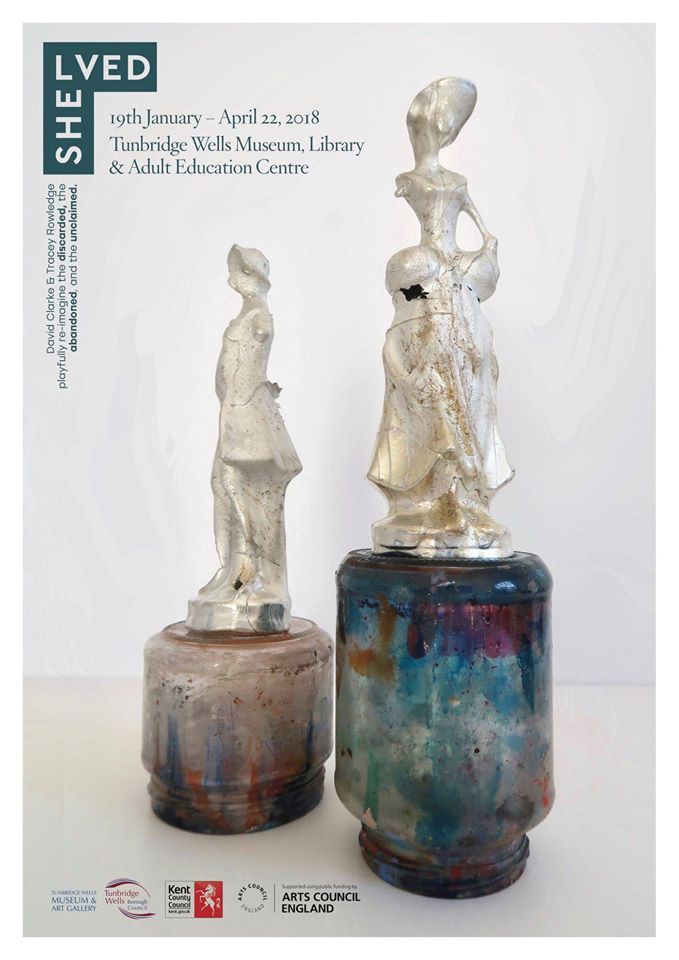
In 2018, with the National Lottery Heritage Fund’s support, we undertook a 1-year residency at Tunbridge Wells Art Gallery, Museum, Library and Adult Education Centre. During our time there, we had the opportunity to search through the archives, explore local history and engage with the community and staff across the whole organisation.
As part of our investigations, we delighted in unpacking and exposing hidden gems and struck gold when we came across boxes of ‘Unclaimed Enquiries’ hidden in the archives. We were really captivated by these artefacts that had been brought in for identification by members of the public but then never reclaimed.
“Here were objects existing in a kind of limbo, not part of the museum collection but unable to be legally disposed of … abandoned like the pets at a dogs and cats home, these objects were waiting for a new life.”
Louise Taylor, former Director, Crafts Council
Landed Gentry (Detail)
Material Painted Glass Jar and Pewter
Dimensions 12 x 16 x 18cm
Year 2018
Location Multiple Private Collections
A few available

Shelved
Material Ceramic, Glass, Paper, Wax, Plasti-Dip, Graphite, Wood
Dimensions 15 x 15x 15cm
Year 2018
Location Multiple Private Collections, UK
A few available

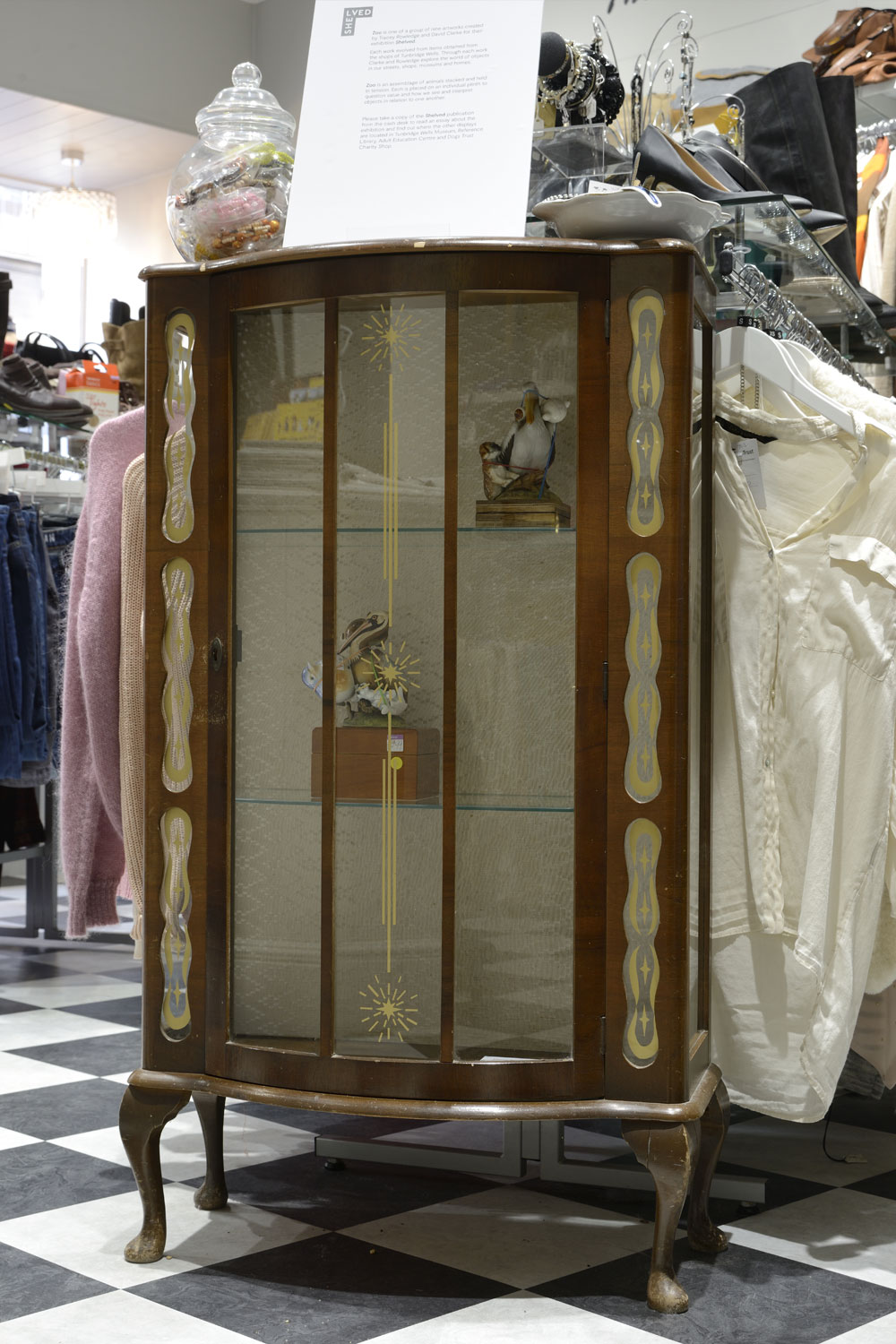
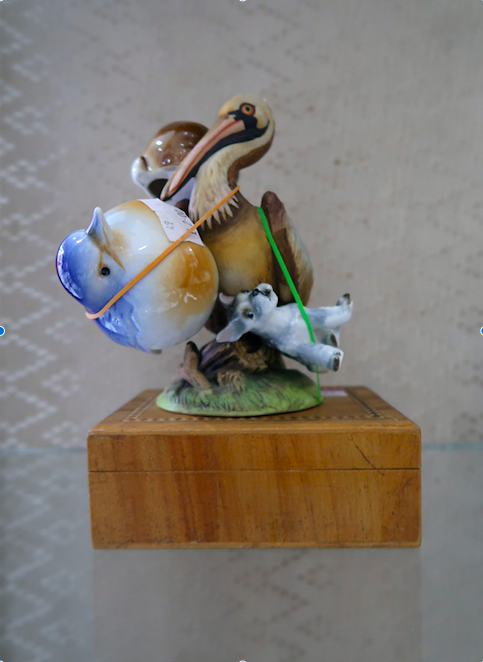
Zoo
Material Ceramic, Rubber, Wood, Metal
Dimensions 12 x 16 x 18cm
Year 2018
Available
Zoo is an assemblage of animals stacked and held within stretched rubber bands. Each object is held in tension but waiting to see how long it can stay in place before tumbling to the ground. Zoo was displayed in The Dogs Trust charity shop, where the items were originally purchased.
Limbo brings together a herd of bygone souvenirs, held in suspension, to create a graceful tension that allows the viewer to see the animals from every aspect. This constrained balancing act highlights what we choose to collect and freezes them in a moment in time.
Displaying the piece in the Portrait Gallery gave us the perfect location. Surrounded by paintings of the aristocracy who would have enjoyed their Grand Tour travels, returning with their own mementoes to remind them of the countries they had once visited.

Limbo (Detail)
Material Wood
Dimensions 50 x50 x 50cm
Year 2018
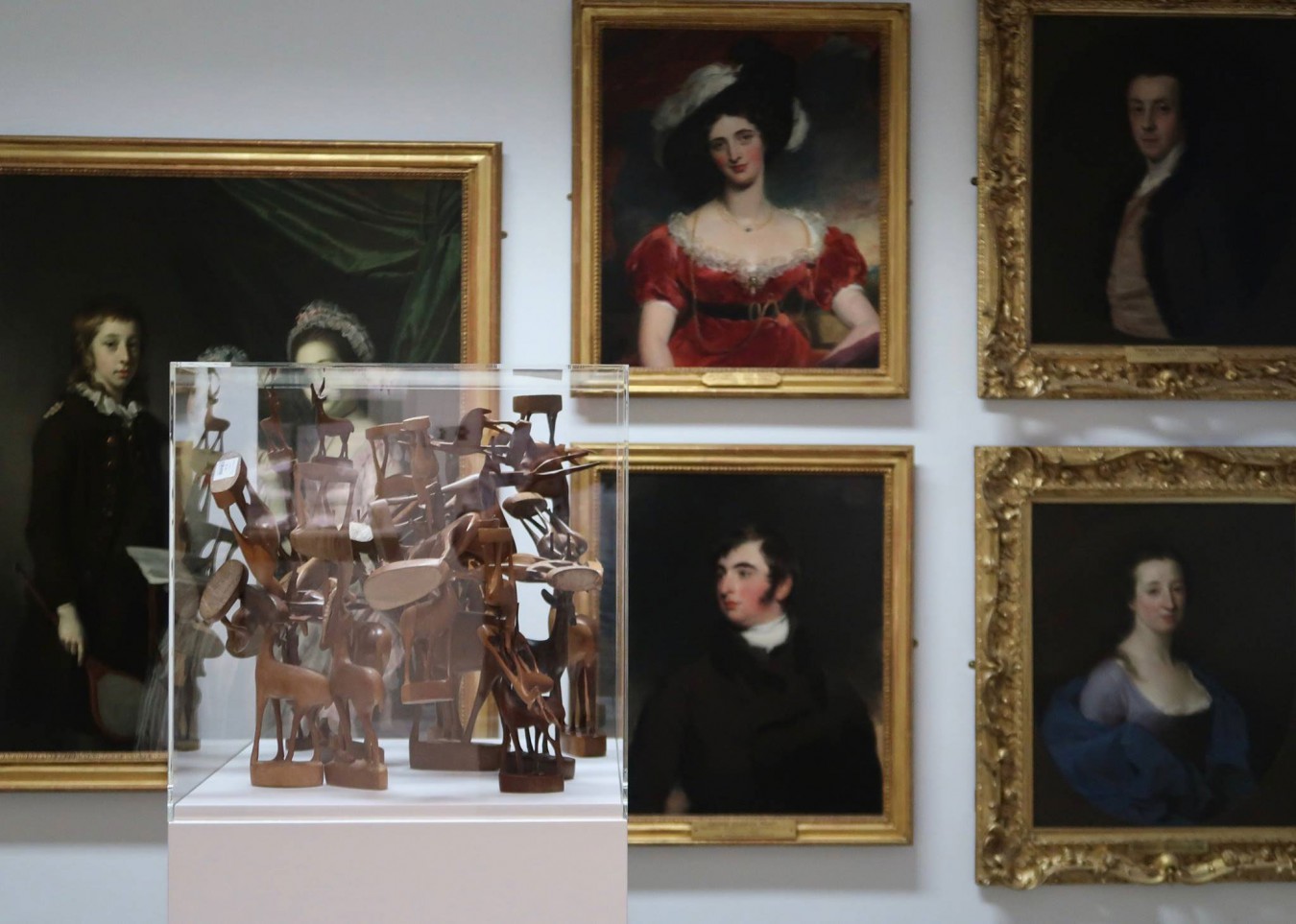

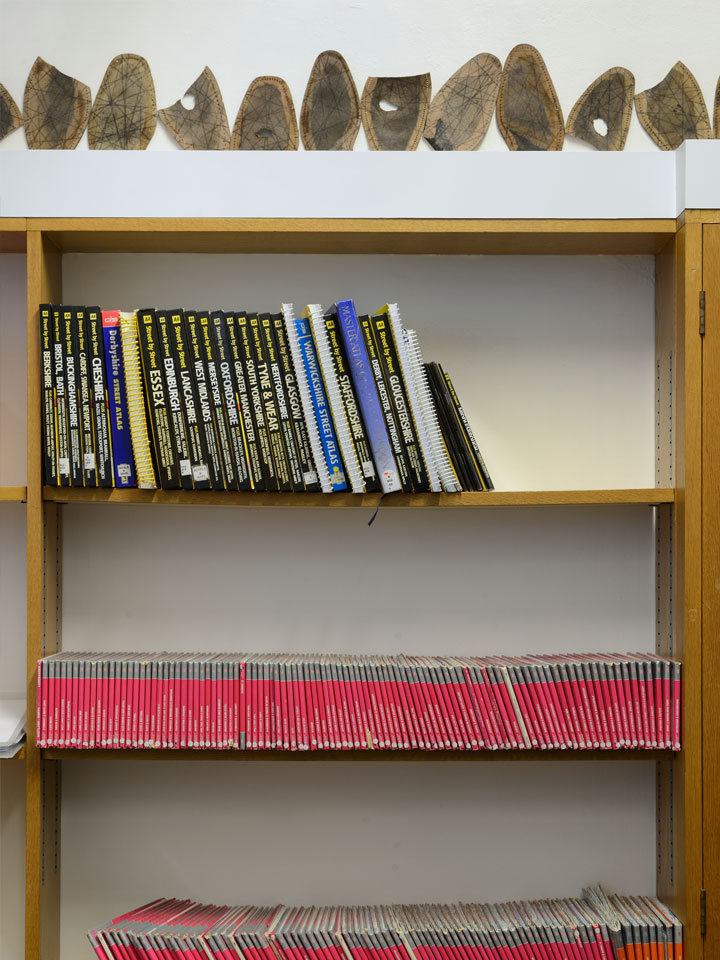
Lost Souls started life as used leather soles retrieved from Paul the local cobblers’ rubbish bin, and kindly donated to us. This waste became our working material and challenged our usual ways of approaching bookbinding and silversmithing.
The tooled lines were intended to suggest journeys taken by the previous owners of the soles, and us, as visitors to Tunbridge Wells. Each sole was attached to the library wall (above the local area maps) using a single gold tack.
Lost Souls
Material Leather, Black Carbon, 9 Carat Gold
Dimensions 400 x 18 x 10cm
Year 2017
Location Multiple Private Collections, UK
A few available
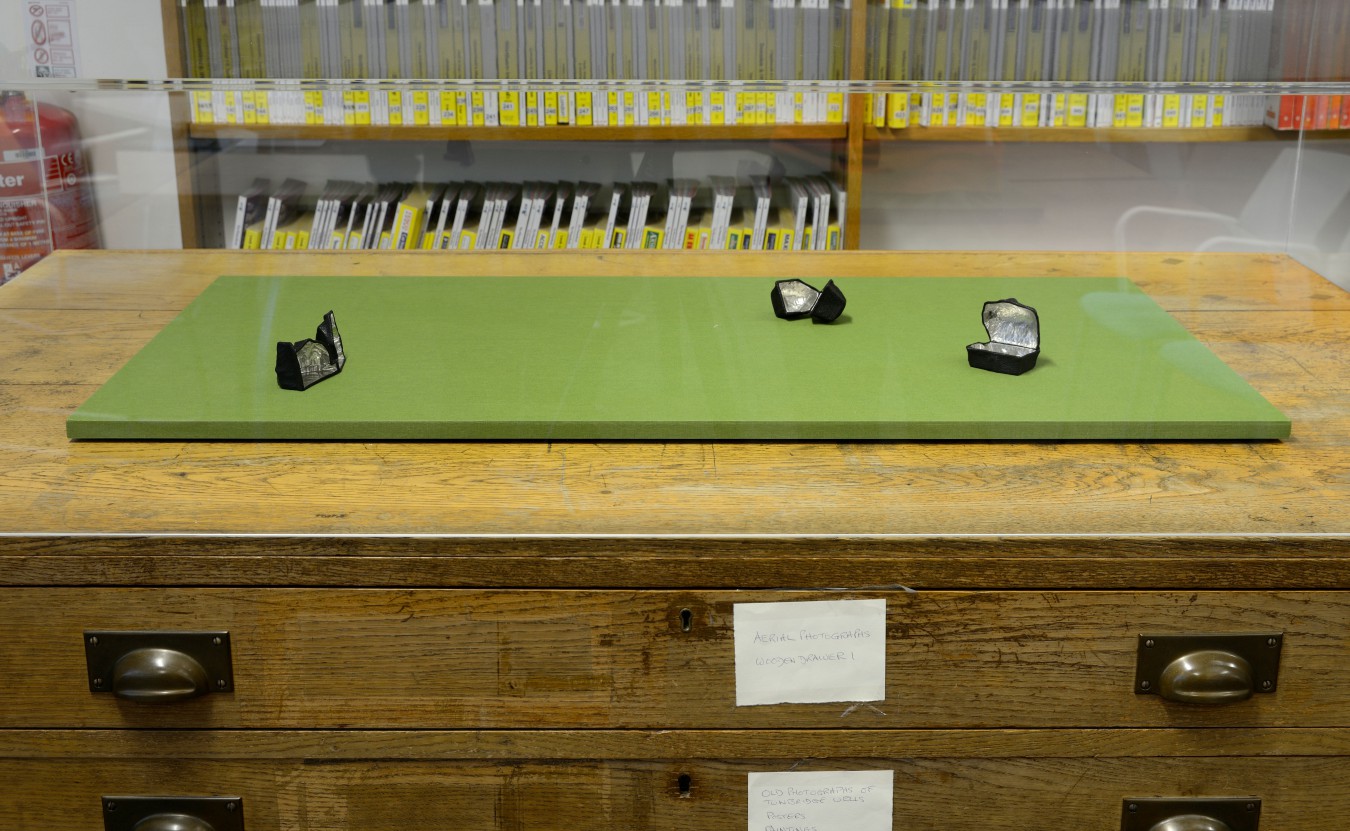
Housed was created using pewter rubbings taken directly from second-hand ornaments. Each one was then cut at different angles to expose the trace of the object within, in all its detail. The notion of a ‘box’ was then heightened with the application of the leather covering.
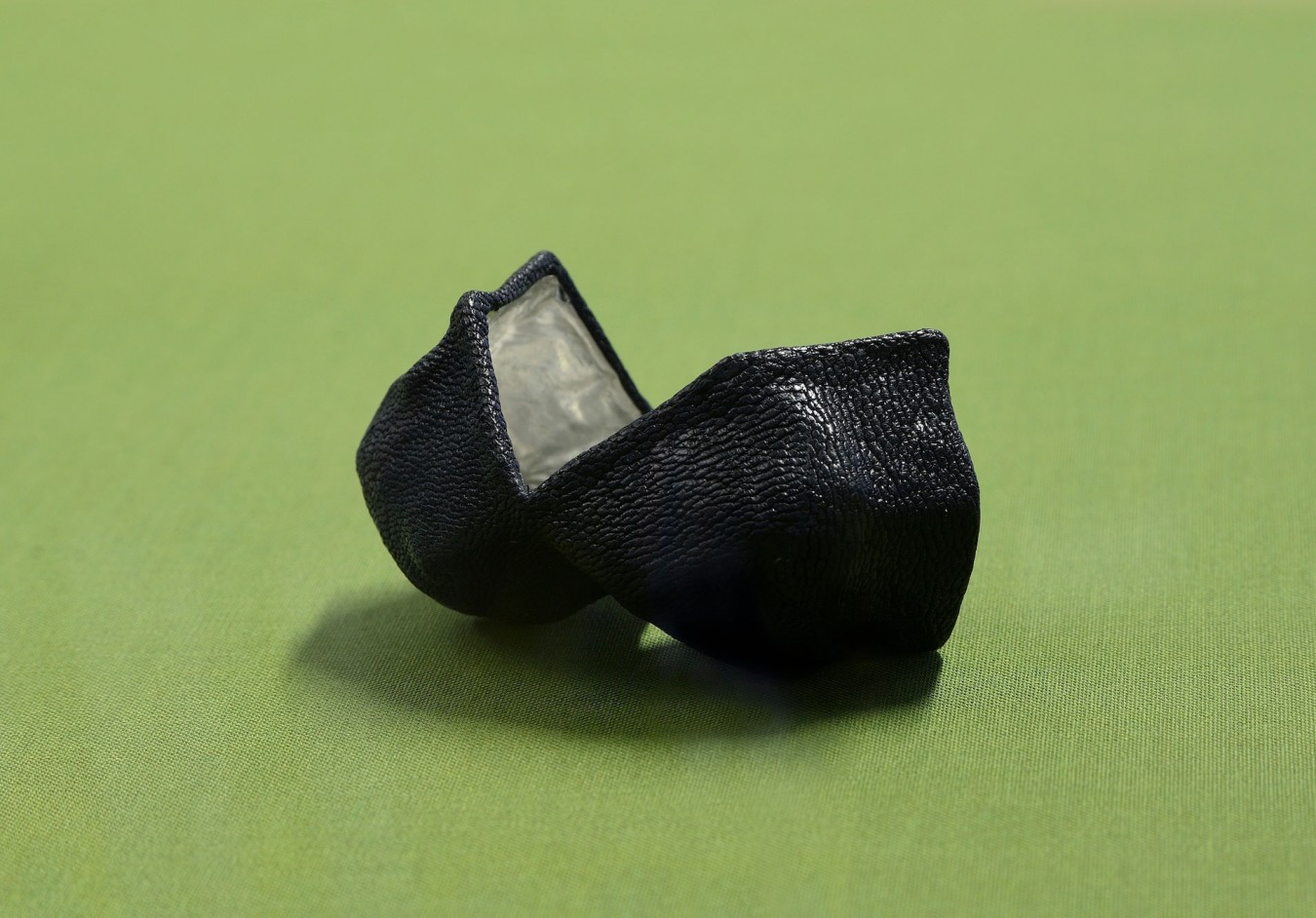
Housed
Material Pewter, Goat Skin, Japanese Paper
Dimensions 42 x 26 x 6cm
Year 2018
Location Dallas Museum of Art, USA
Greetings From Tunbridge Wells was created using postcards depicting scenes from the town, which had been a fashionable spa resort from the mid-1700s, though its popularity as a spa destination decreased with the advent of sea bathing.
These postcards were assembled as a grid and altered by repeatedly punching through the surface, reminiscent of the pin-prick pictures we discovered in the museum’s stored collections.
Greetings from Tunbridge Wells
Material Paper
Dimensions 96 x 65 x 10cm
Year 2017
Available
